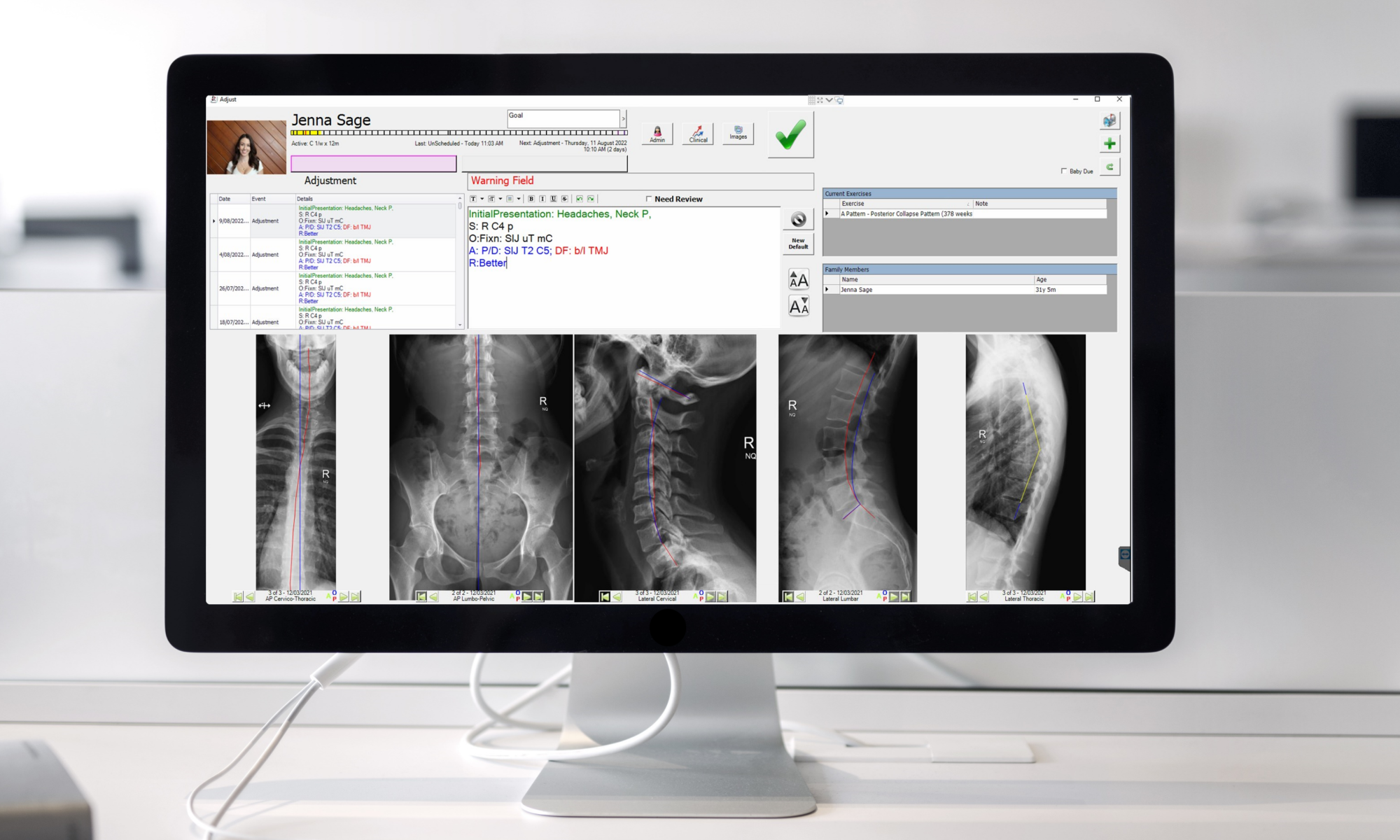In today’s world of ever-increasing standards it is reaching the point where it is no longer practical to use paper records to fulfil your compliance obligations. Your paperwork needs to meet and exceed the requirements of your registration board and your patient’s insurers. You also need those records to be rock-solid in a court of law where the weight of expert opinion comes from medical specialists, not chiropractors.
With Spinalogic’s Clinical excellence, you can not only raise your standard to meet and exceed any compliance obligation, it will take you less time and probably even be fun. In fact, most likely you’ll spend a lot less time than you currently do on your records while making them a full and complete record of what you actually do.
Spinalogic Accelerated Clinial Entry System (ACES) gives you a unique dictionary for every part of your clinical record. We supply you with a comprehensive set of dictionaries based on current best-practices to get you started but they are all fully customizable to suit your style of practice.
Here is an example of a diagnosis created with ACES in about 7 seconds:
Chronic severe post-traumatic cervical spine subluxation of C5 complicated by loss of the normal cervical lordosis causing headaches, cervical spine muscle splinting, spasm and pain, referred pain to left arm and generalised loss of wellness aggravated by chronic abnormal posture.
Here is an example of a prognosis created in about 3 seconds:
The prognosis for the cervical spine is for substantial correction of the misalignment found. Full correction is unlikely. Confidence of achieving the prognosis is 80%. Acheivement of correction is dependent on the patient’s maintenance of correct posture as instructed. Acheivement of correction is dependent on the patient’s adherance to the prescribed corrective exercises at home. The patient elected the recommended program of care. That is considered the minimum recommended schedule of care.
And here is an example of a Management Plan created in about 2 seconds:
Exercises have been prescribed to increase the strength endurance of the relevant postural muscles. A series of spinal adjustments will be used to free restricted spinal, cranial, pelvic and/or other joints, interrupt self-perpetuating pain cycles and to restore global spinal alignment. Adjustments will be primarily performed using the ‘Activator’ adjusting instrument and drop-table using CBP technique. Traction exercises have been prescribed to be performed at home. These exercises were clearly explained and documented for the patient to take home. The patient was taught correct posture and advised that achievement of spinal correction and maintenance of spinal health was dependent on maintenance of correct posture. The patient was given general advice on nutritional principles to facilitate the healing process. The case will be reviewed in 6 weeks.
This is simply documenting what you are already doing but as they say in a court of law, “If it’s not written down, it didn’t happen.” In fact, by working closely with WCA-Australia who support many chiropractors facing litigation, we have worked out the key data you have to record to keep yourself safe. And it’s not what most chiropractors think is important at all!
It turns out that there are exactly 6 key parts of the case that you must document with every new patient and must review at every re-exam. Not one of them is your ‘adjustment record’ from a regular visit! Three of them you have seen above. In just 3 minutes with a new patient and 30 sec for re-exams, you can create rock-solid records that will protect you, your patients and your practice while raising your clinical standards.
This would take you 20-30 minutes to do by hand.
